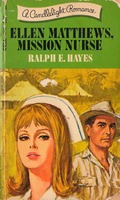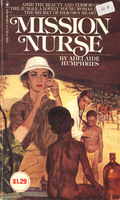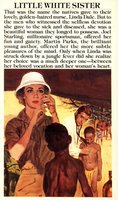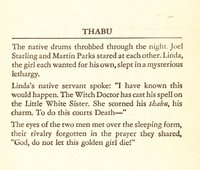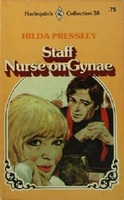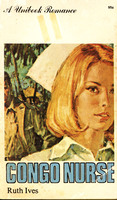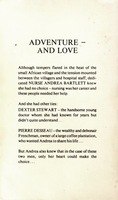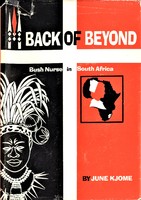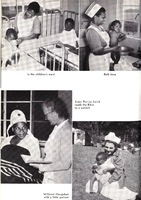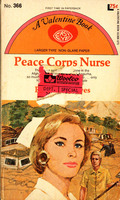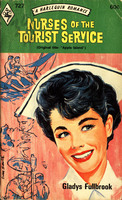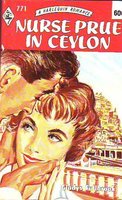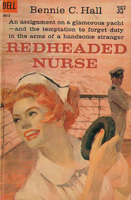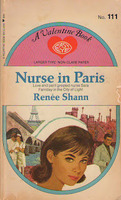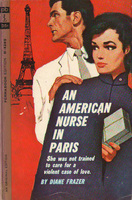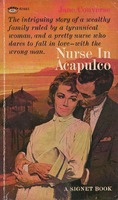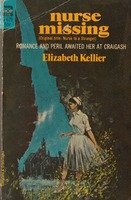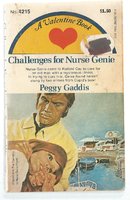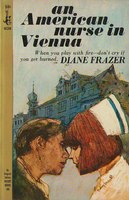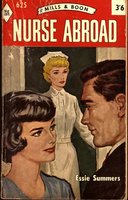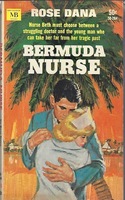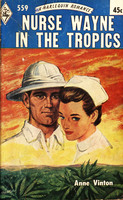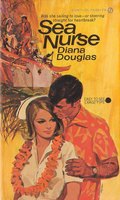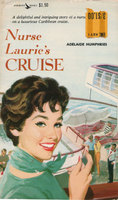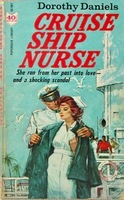Politics and International Affairs
Social and cultural historians will find no shortage of research material in the plots, subplots, and narrative settings of nurse romance novels. How authors choose to depict contemporaneous political and social events provides information about how the entertainment industry balanced presenting fiction that was timely and relevant with a mass-market audience.
In the fifites and sixties, authors used the Red Scare, Cold War, and fear of atomic warfare to complicate their plots. The sixties also saw a proliferation of nurse romance novels with a foreign travel theme, perhaps in response to government agendas that sought to open up international relations in new ways, for example the Kennedy administration's support for the Alliance for Progress and other changes in foreign policy. Unfortunately, many of these programs also foisted Western ideals upon nations they sought to help. These issues play out in the pages of nurse romance novels.
Click each image on this page to learn a little more!
Missions Work
Nurse romance protagonists felt called to devote themselves to missions work overseas, selflesslessly serving those "less fortunate." But romance novels aren't the only narratives of nurses travelling; the collection also contains memoirs of real nurses on mission trips. Compare, for example, June C. Kjome's memoir, Back of Beyond: Bush Nurse in South Africa to the nurse romance novels about missions work, which were published within a few years of one another. While the nurse romance novels are rife with white, western supremacy, June Kjome dedicated her life to combatting racism. Her missions work took her to South Africa for 17 years where she helped establish nursing schools. When she returned to the United States, she spoke out against not only apartheid but also against the instituionalized racism of the missions organizations as well.
Service Work or Cultural Hegemony?
Both Nurses of the Tourist Service and Peace Corps Nurse were published in the 1960s as the travel and tourism industries were growing immensely. Peace Corps Nurse also came out just 6 years after U.S. President Kennedy signed an executive order establishing the Peace Corps program. From the perspectives of twenty-first century scholars who have studied colonialism, international relations, and are likelier to have travelled internationally than readers from the 1960s, these stories describe troubling aspects of Western hegemony.
And yet, for their time, they were relatively progressive. For example, the protagonist of Peace Corps Nurse is initially arrogant and judgmental about Afghan culture; her disrespect costs her her job and she spends the entire novel overcoming her biases and repairing relationships.
International Travel
Not all nurse-protagonists travel as humanitarians, some work as private-duty nurses accompanying wealthy jet-setting patients. Alternatively, the protagonist accepts an international job placement as she runs away from a past heartbreak. No fewer than half a dozen of them work on cruise ships. In the Nurse Romance Novel collection, nurse-protagonists travel to places such as: Spain, France, the Congo, Sri Lanka, the Bahamas, the Scottish Highlands, the West Indies, Ghana, Vienna, New Zealand, the Philippines, and more. Not unsurprisingly, many of these titles should be investigated as much for their commentary on international politics as for representations of other cultures and ehtnicities.
While the nurses in these novels have no trouble landing private duty assignments, in reality, private duty nursing opportunities declined after the Great Depression. Nursing jobs that involve yachting around the Pacific can't possibly be as easy to come by as one would think based on nurse romance novels. However, it is true that through the early 20th century, many real nurses enjoyed private duty nursing because it provided them economic stability, independence, and the chance to travel a great deal in an era when these opportunities were limited for single women.
Critical Thinking Prompts
-
How are the cultures of these foreign contexts represented in nurse romance novels? Are these representations consistent with those found in non-fiction media of the same time period?
-
Should fictional works be expected to accurately or respectfully portray other cultures?
-
What function does foreign travel serve in the narrative and what function might it serve for readers?

